- 2024年-03月-07日:民末上海影像之八(210P)
- 2024年-03月-07日:民末上海影像之七(500P)
- 2024年-03月-07日:民末上海影像之六(500P)
- 2024年-03月-07日:民末上海影像之五(500P)
- 2024年-03月-07日:民末上海影像之四(199P)
- 2024年-03月-07日:民末上海影像之三(500P)
- 2024年-03月-04日:民末上海影像之二(500P)
- 2024年-03月-04日:民末上海影像之一(500P)
- 2024年-03月-03日:安特生的远东相册.约1914年至1938年(590P)
- 2024年-02月-20日:一千九百十二年中国历史插画伍拾二幅(112P)
- 2024年-02月-19日:图像晚清:《点石斋画报》之外(389P)
- 2024年-02月-19日:画说老上海(102P)
- 2023年-11月-08日:巴基斯坦·列国志(302P)
- 2023年-10月-30日:1984 China National Parade 1984年中国大阅兵(40P)
- 2023年-06月-25日:中国神话史(534P)
- 2023年-06月-21日:古代社会物质文明·世界历史 第4册(374P)
- 2023年-06月-21日:世界史研究的视角和模式·世界历史 第3册(418P)
- 2023年-06月-21日:人·自然·历史·世界历史 第2册(494P)
- 2023年-06月-21日:中国世界史研究的产生和发展·世界历史 第1册(426P)
- 2023年-06月-15日:性史 (第一、二卷) by [法] 米歇尔·福柯(445P)
- 2023年-06月-14日:苏联的最后一年[俄][罗伊・麦德维杰夫](308P)
- 2023年-05月-26日:黄埔军校史料(617P)
- 2023年-05月-16日:酷刑与中国社会(浙江人民出版社 1991)(254P)
- 2023年-05月-03日:故宫盗宝案真相(355P)
- 2023年-04月-22日:1941年成都龙泉驿(53P)
- 2023年-04月-17日:残园(圆明园)(85P)
- 2023年-03月-24日:中华上下五千年(172P)
- 2023年-02月-28日:人物述往 下 杨天石主编(258P)
- 2023年-02月-28日:人物述往 上. 杨天石主编(371P)
- 2023年-02月-28日:非常与正常:上海“文革”时期的社会生活 下 by 金大陆(468P)
- 2023年-02月-24日:赛雷三分钟漫画世界史(325P)
- 2023年-02月-21日:苏米谭史广.郭化撰.徐日昌阅.胡正言校(145P)
- 2023年-02月-14日:魯西亜人来航絵図(6P)
- 2023年-02月-14日:国史大辞典之附图.八代国治等1927年編(58P)
- 2023年-02月-13日:东都事略.1-6卷.王称撰.宋刻本.眉山程舍人宅刊(81P)
- 2023年-02月-10日:富格尔家族荣耀秘笈.约尔格·伯瑞乌.1548(315P)
- 2023年-02月-09日:长崎港南京贸易绘图.绘卷(15P)
- 2023年-02月-08日:硯史. 高鳳翰.撰集(152P)
- 2023年-02月-06日:蝦夷土人風俗图巻(32P)
- 2023年-02月-05日:中国命理学史论 (陆致极)(657P)
- 2023年-02月-01日:皇清职贡图九卷.清.傅恒等撰.乾隆内府刻本(66P)
- 2023年-02月-01日:皇清职贡图八卷.清.傅恒等撰.乾隆内府刻本(59P)
- 2023年-02月-01日:皇清职贡图七卷.清.傅恒等撰.乾隆内府刻本(149P)
- 2023年-02月-01日:皇清职贡图六卷.清.傅恒等撰.乾隆内府刻本(67P)
- 2023年-02月-01日:皇清职贡图五卷.清.傅恒等撰.乾隆内府刻本(78P)
- 2023年-01月-31日:中国历代酷刑实录(443P)
- 2023年-01月-31日:皇清职贡图四卷.清.傅恒等撰.乾隆内府刻本(76P)
- 2023年-01月-31日:皇清职贡图三卷.清.傅恒等撰.乾隆内府刻本(65P)
- 2023年-01月-31日:皇清职贡图二卷.清.傅恒等撰.乾隆内府刻本(47P)
- 2023年-01月-31日:皇清职贡图一卷.清.傅恒等撰.乾隆内府刻本(99P)
- 2023年-01月-29日:绘图湘军平逆传(233P)
- 2023年-01月-27日:出像杨文广征蛮传.明.彩绘本(75P)
- 2023年-01月-27日:分类合璧图像句解君臣故事.卷上中下.1689刊(81P)
- 2023年-01月-10日:日军在中国东北虐杀民众惨状.1931-1932(11P)
- 2023年-01月-08日:中国之旅.俄国科学贸易考察团.Boiarskii.Adolf-Nikolay Erazmovich(104P)
- 2022年-12月-30日:北京城写真.小川一真.1901(434P)
- 2022年-12月-26日:八旬万寿盛典图说.2卷.乾隆57年.武英殿套印本(240P)
- 2022年-12月-22日:1825年水粉画的中国商品贸易状况(46P)
- 2022年-12月-22日:北京城写真.1892.小川一真(19P)
- 2022年-12月-18日:王树增:长征之二(262P)
- 2022年-12月-18日:王树增:长征之一(400P)
- 2022年-12月-17日:张伯林卷3·西方的中国影像 1793-1949(172P)
- 2022年-12月-17日:张伯林卷2·西方的中国影像 1793-1949(176P)
- 2022年-12月-17日:张伯林卷1·西方的中国影像 1793-1949(197P)
- 2022年-12月-12日:约翰·汤姆森卷·西方的中国影像 1793-1949(207P)
- 2022年-12月-12日:约翰·查利斯·奥斯瓦尔德卷·西方的中国影像 1793-1949(209P)
- 2022年-12月-10日:亚瑟·威廉·佩奈尔卷2·西方的中国影像 1793-1949(193P)
- 2022年-12月-10日:亚瑟·威廉·佩奈尔卷1·西方的中国影像 1793-1949(195P)
- 2022年-12月-09日:小川一真卷4·西方的中国影像 1793-1949(192P)
- 2022年-12月-09日:小川一真卷3·西方的中国影像 1793-1949(197P)
- 2022年-12月-09日:小川一真卷2·西方的中国影像 1793-1949(201P)
- 2022年-12月-09日:小川一真卷1·西方的中国影像 1793-1949(213P)
- 2022年-12月-08日:西德尼·D·甘博3·西方的中国影像 1793-1949(211P)
- 2022年-12月-08日:西德尼·D·甘博2·西方的中国影像 1793-1949(205P)
- 2022年-12月-08日:西德尼·D·甘博1·西方的中国影像 1793-1949(219P)
- 2022年-12月-07日:白露德 児岛鹭麿 杉江房造卷·西方的中国影像1793-1949版(204P)
- 2022年-12月-07日:威廉·亚历山大、托马斯·阿洛姆卷·西方的中国影像 1793-1949(243P)
- 2022年-12月-05日:台湾写真帖卷3·西方的中国影像 1793-1949(189P)
- 2022年-12月-05日:台湾写真帖卷2·西方的中国影像 1793-1949(189P)
- 2022年-12月-05日:台湾写真帖卷1·西方的中国影像 1793-1949(201P)
- 2022年-12月-04日:台湾老明信片卷2·西方的中国影像 1793-1949(225P)
- 2022年-12月-04日:台湾老明信片卷1·西方的中国影像 1793-1949(237P)
- 2022年-12月-03日:旧中国大博览(下 )之二1900-1949(428P)
- 2022年-12月-03日:旧中国大博览(下 )之一1900-1949(400P)
- 2022年-12月-03日:旧中国大博览 (上 )之二1900-1949(331P)
- 2022年-12月-03日:旧中国大博览 (上 )之一1900-1949(400P)
- 2022年-12月-03日:山田米吉卷2·西方的中国影像 1793-1949(155P)
- 2022年-12月-03日:山田米吉卷1·西方的中国影像 1793-1949(189P)
- 2022年-12月-02日:山崎鋆一郎 大西守一卷·西方的中国影像 1793-1949(191P)
- 2022年-12月-02日:山本讃七郎 南怀谦 沃特·乔治·恩斯特卷·西方的中国影像 1793-1949(219P)
- 2022年-12月-01日:平井谦卷·西方的中国影像 1793-1949(189P)
- 2022年-12月-01日:皮肯斯卷·西方的中国影像 1793-1949(249P)
- 2022年-11月-30日:派尔森卷4·西方的中国影像 1793-1949(205P)
- 2022年-11月-30日:派尔森卷3·西方的中国影像 1793-1949(221P)
- 2022年-11月-30日:派尔森卷2·西方的中国影像 1793-1949(253P)
- 2022年-11月-30日:派尔森卷1·西方的中国影像 1793-1949(201P)
- 2022年-11月-28日:莫理循卷3·西方的中国影像 1793-1949(189P)
- 2022年-11月-28日:莫理循卷2·西方的中国影像 1793-1949(229P)
- 2022年-11月-28日:莫理循卷1·西方的中国影像 1793-1949(249P)
- 2022年-11月-27日:美国《生活》周刊卷8·西方的中国影像 1793-1949(149P)
日本北海道古称“虾夷”(えみし Emishi 或えぞ Ezo),日本史书上也有不少关于“虾夷人”的记载。此绘制于江户后期的绘卷便描绘了蝦夷土人的生产、生活、服饰、劳作等风俗状况。蝦夷,也译作虾夷,是北海道的古称,虾夷人是古代日本的族群之一。根据地理分布分为东虾夷、西虾夷、渡岛虾夷、渡觉虾夷等。虾夷是指他们的毛发长如虾须,其实是对他们的贬义称呼。虾夷人,多毛发及须髯、颡(脑门)高、眼凹、鼻尖、肤色浅棕,阿依努人是其后裔。由于民族间的通婚和文化的同化,纯种的虾夷人濒临灭绝,现在北海道大约有12000虾夷人。虾夷人体格上与日本人类似,只不过身材更加矮小,虾夷男人络腮胡非常重,连他们的女人嘴边也有胡子的痕迹。
Hokkaido, Japan, was formerly known as “shrimp Yi” (え み し Emishi or え ぞ Ezo). There are also many records of “shrimp Yi people” in Japanese history books. The scroll painted in the late Edo period describes the production, life, clothing, labor and other customs of the Xiayi natives. Shrimp Yi, also translated as shrimp Yi, is the ancient name of Hokkaido. Shrimp Yi people are one of the ethnic groups in ancient Japan. According to geographical distribution, it can be divided into East Shrimp, West Shrimp, Dudao Shrimp, Dujue Shrimp, etc. Prawny refers to their hair as long as shrimp whiskers, which is actually a derogatory term for them. The shrimp Yi people have many hairs and beards, high Pelteobagrus (forehead), sunken eyes, sharp nose, and light brown skin. The Ainu people are their descendants. Due to ethnic intermarriage and cultural assimilation, the pure species of shrimp Yi people are endangered, and there are about 12000 shrimp Yi people in Hokkaido now. The human body of shrimp barbarians is similar to that of Japanese, except that they are shorter. The shrimp barbarians men have very heavy whiskers, and even their women have traces of beard on the mouth.


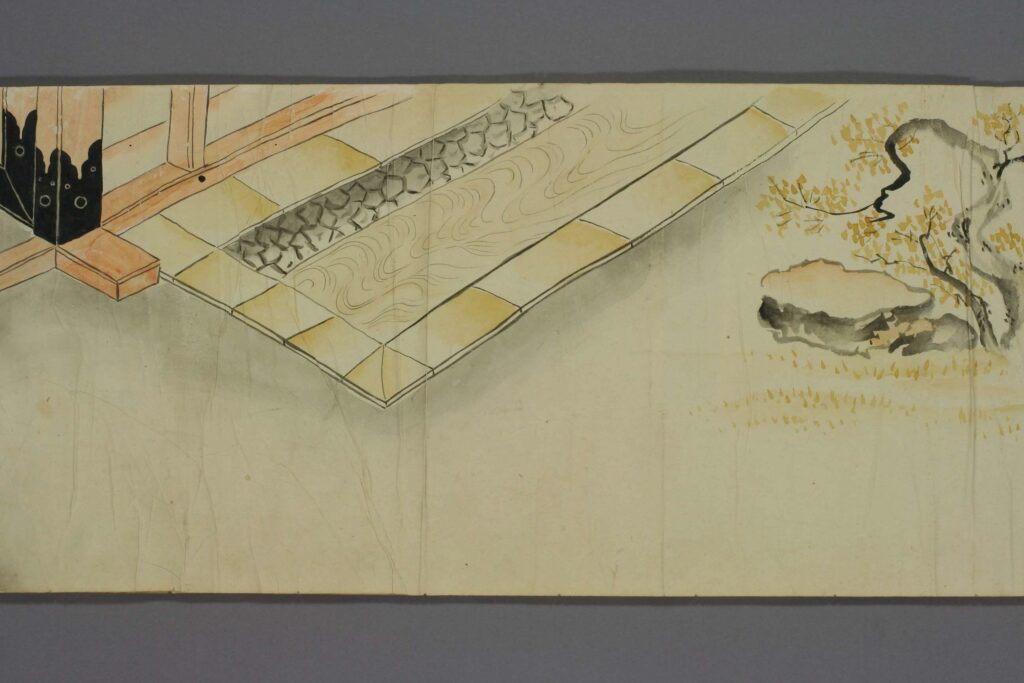
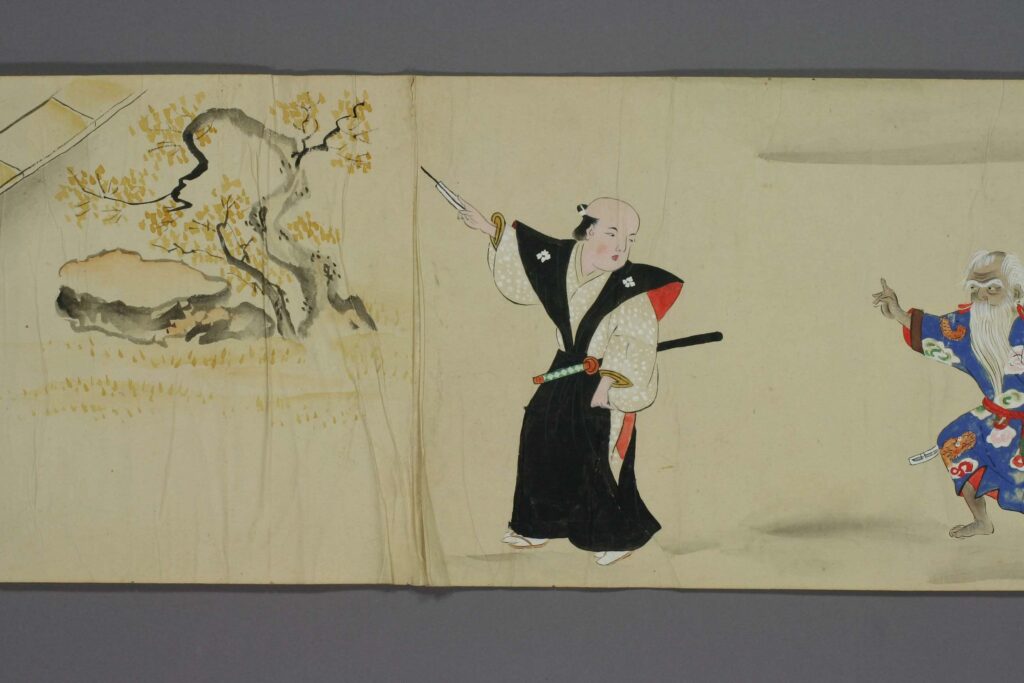
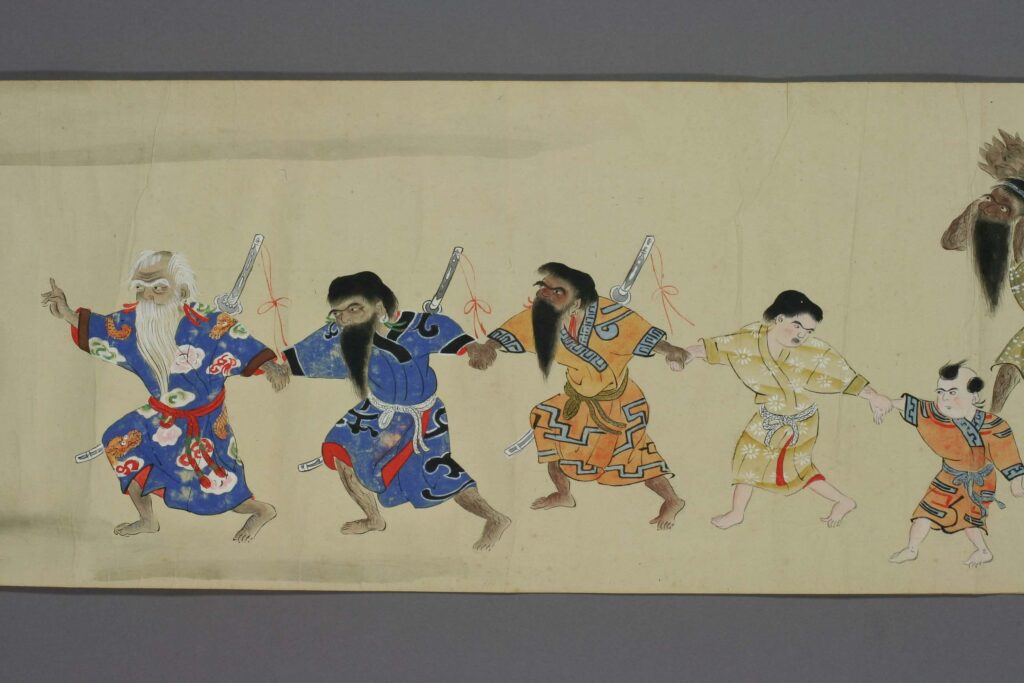


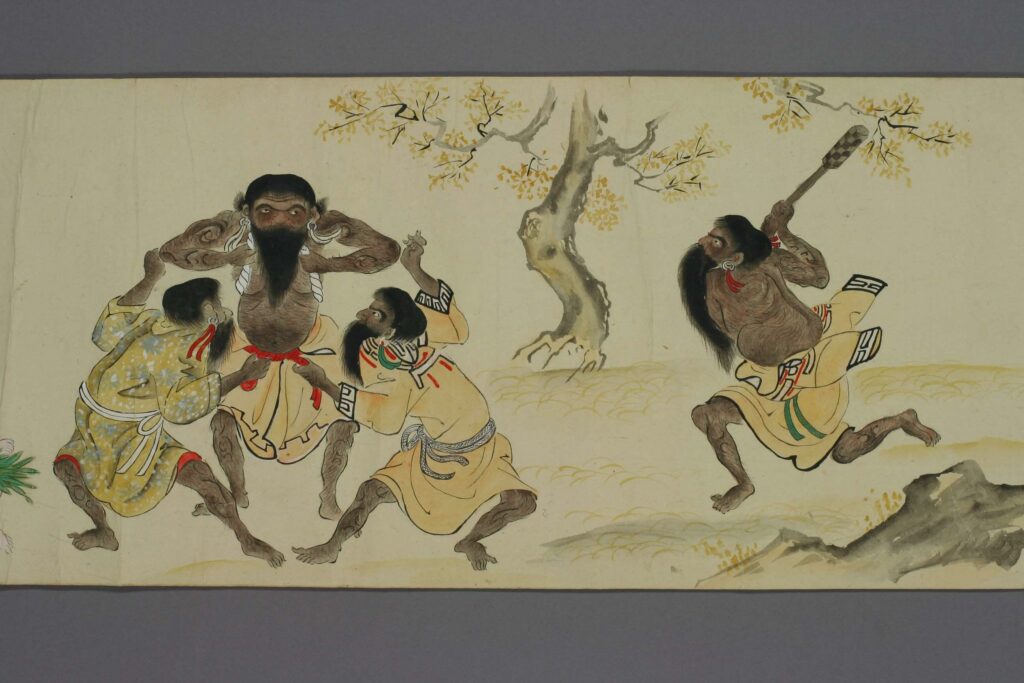
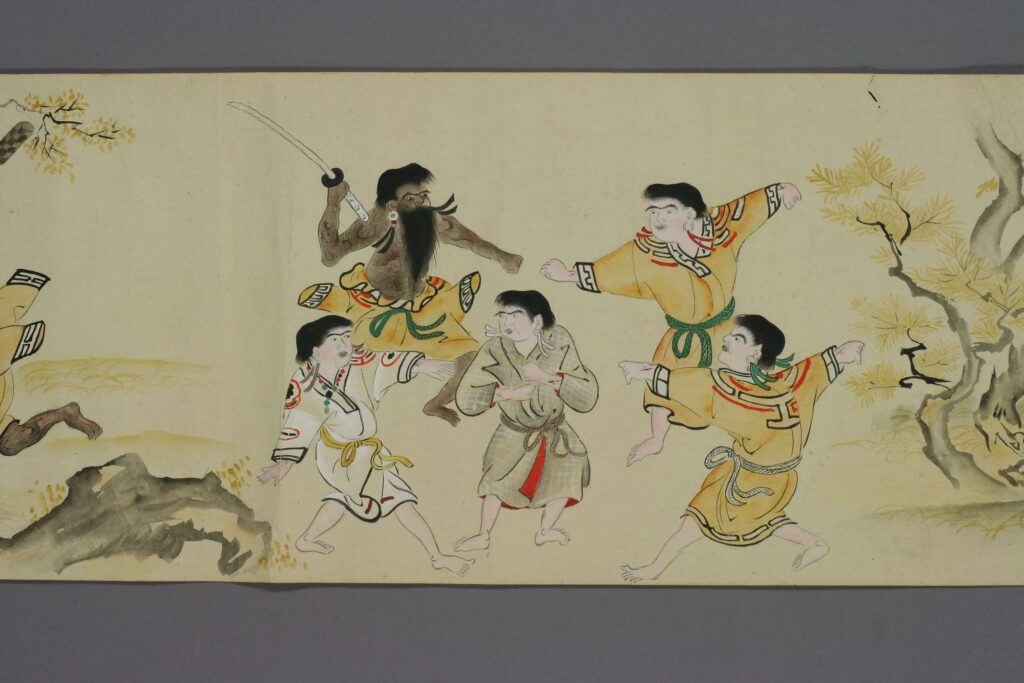
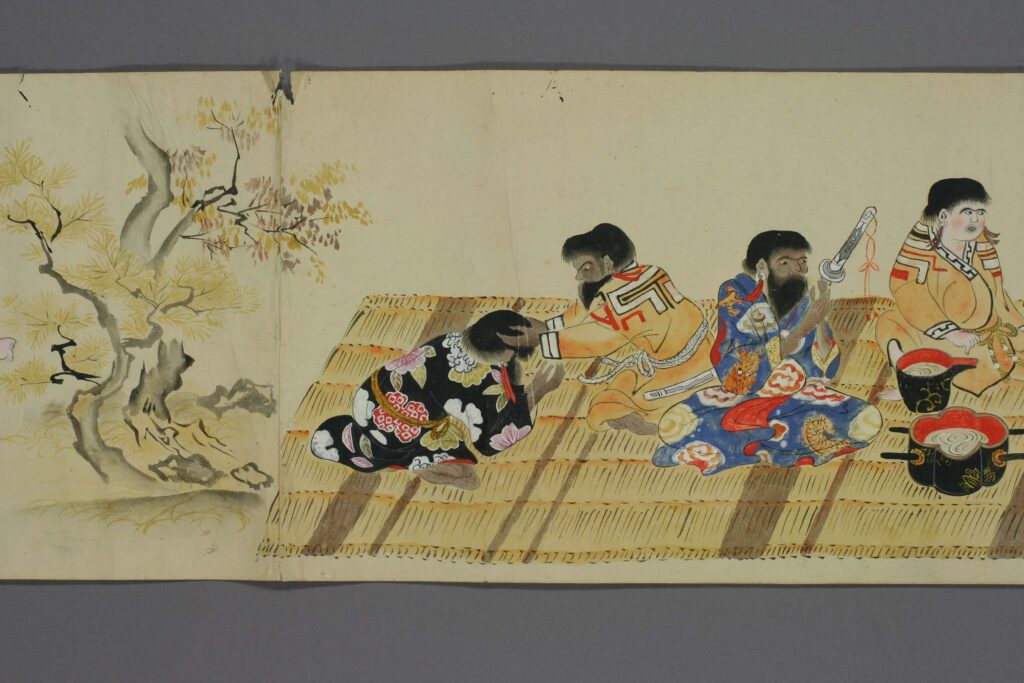
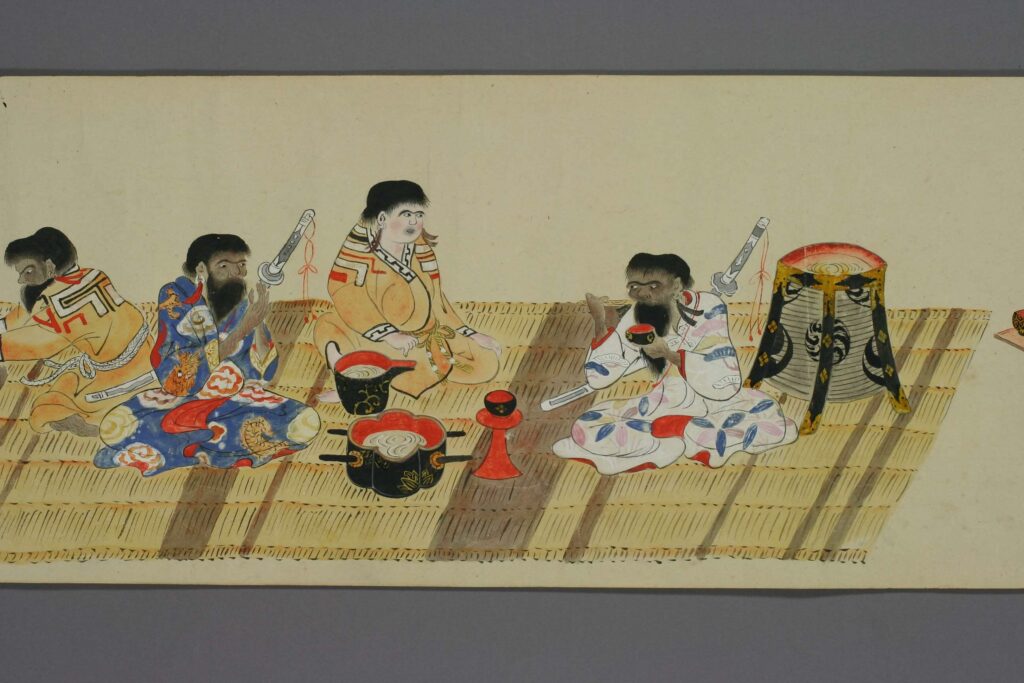
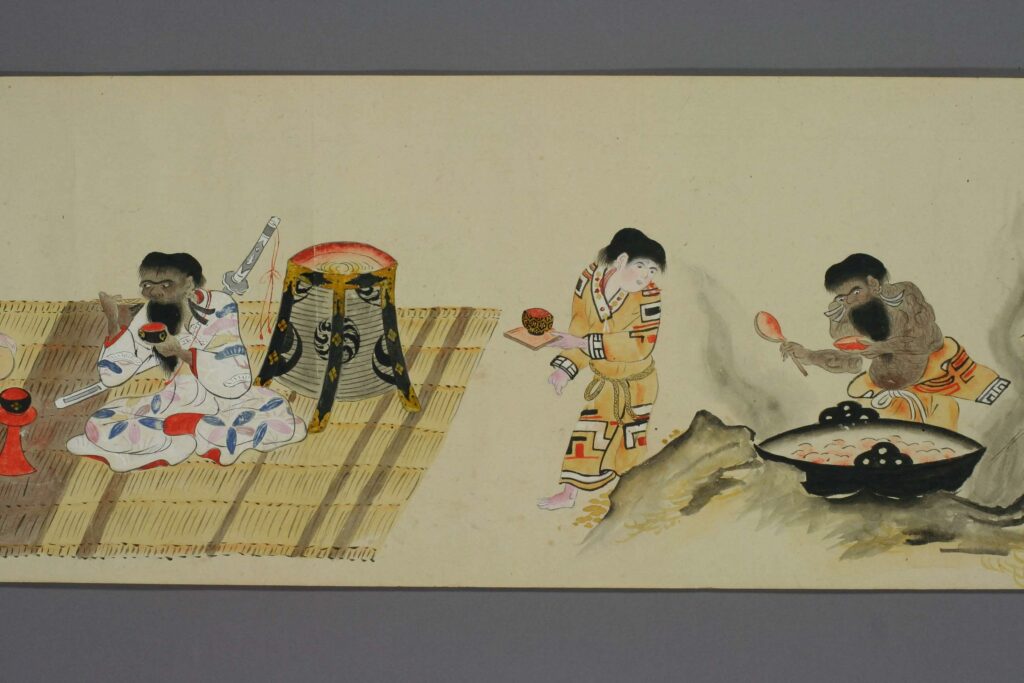
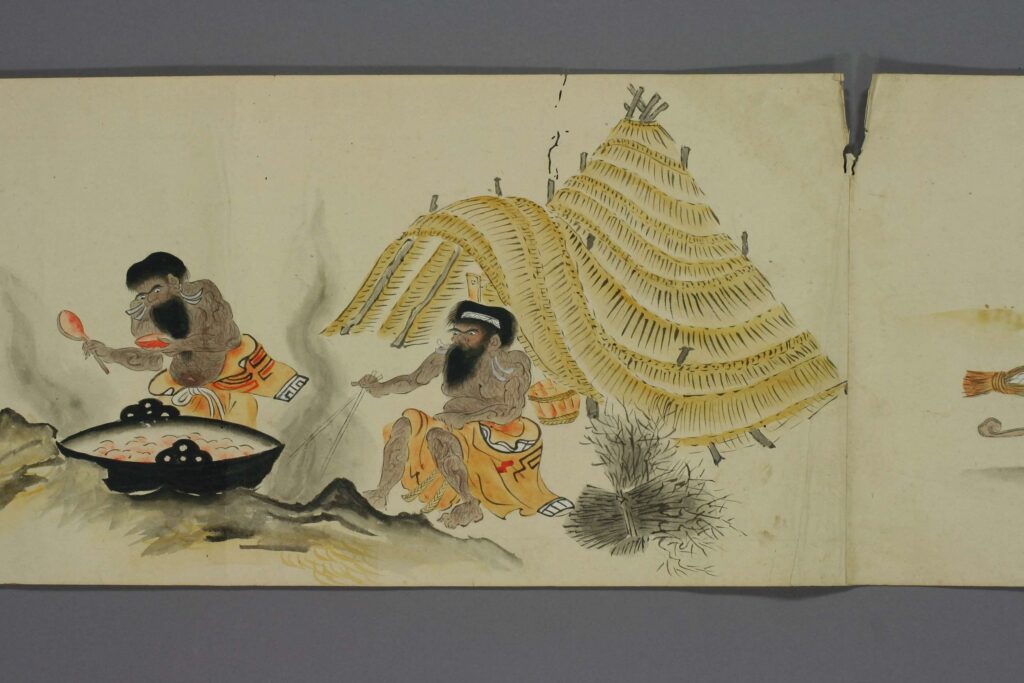
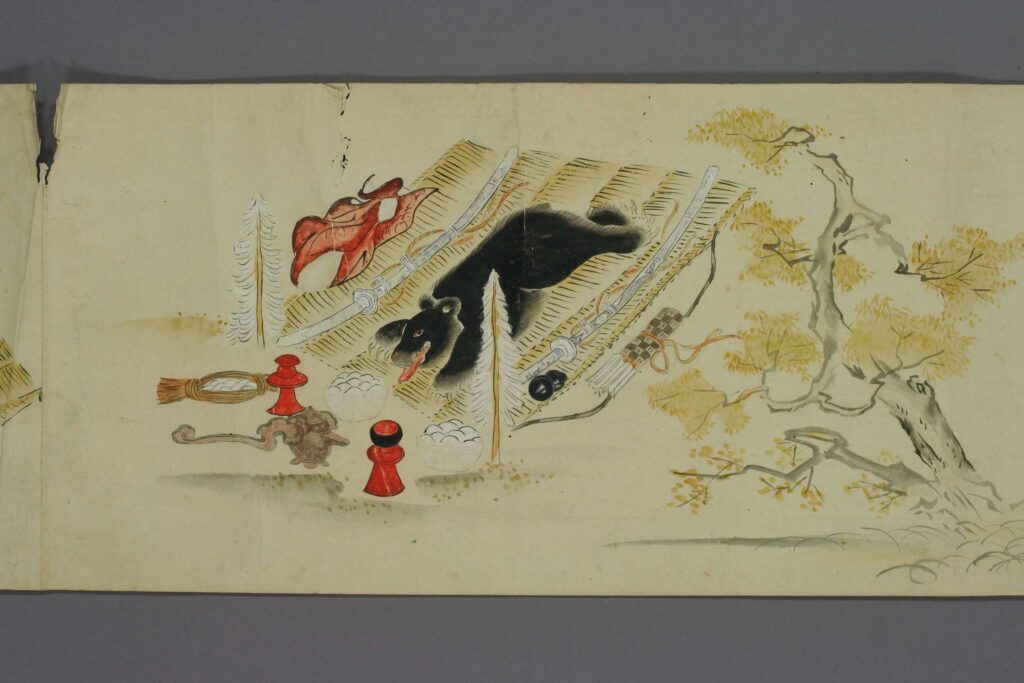
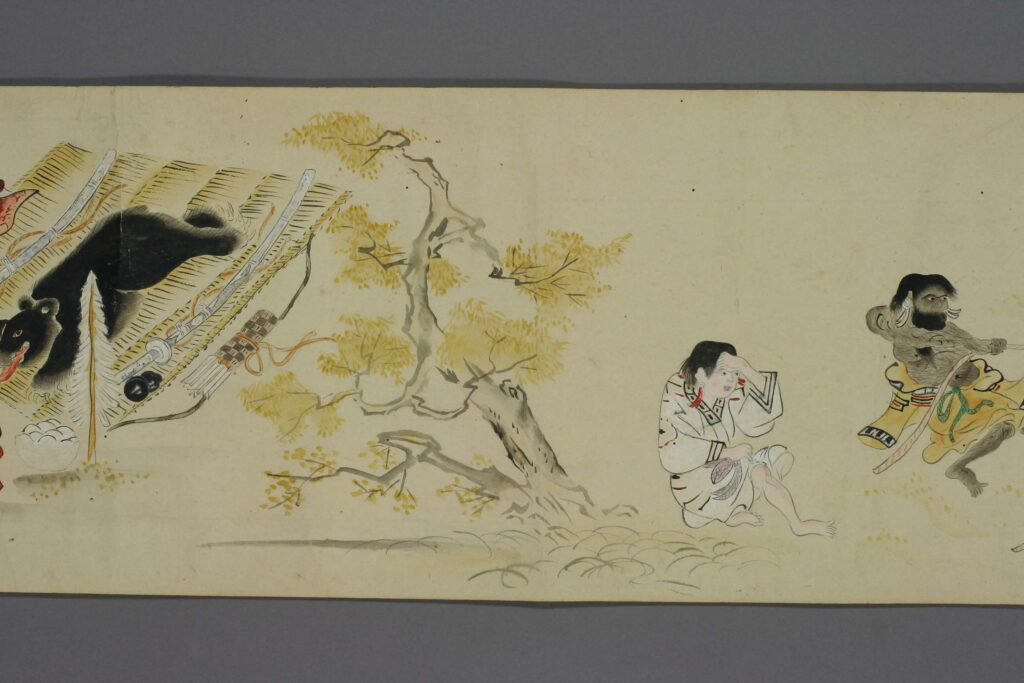

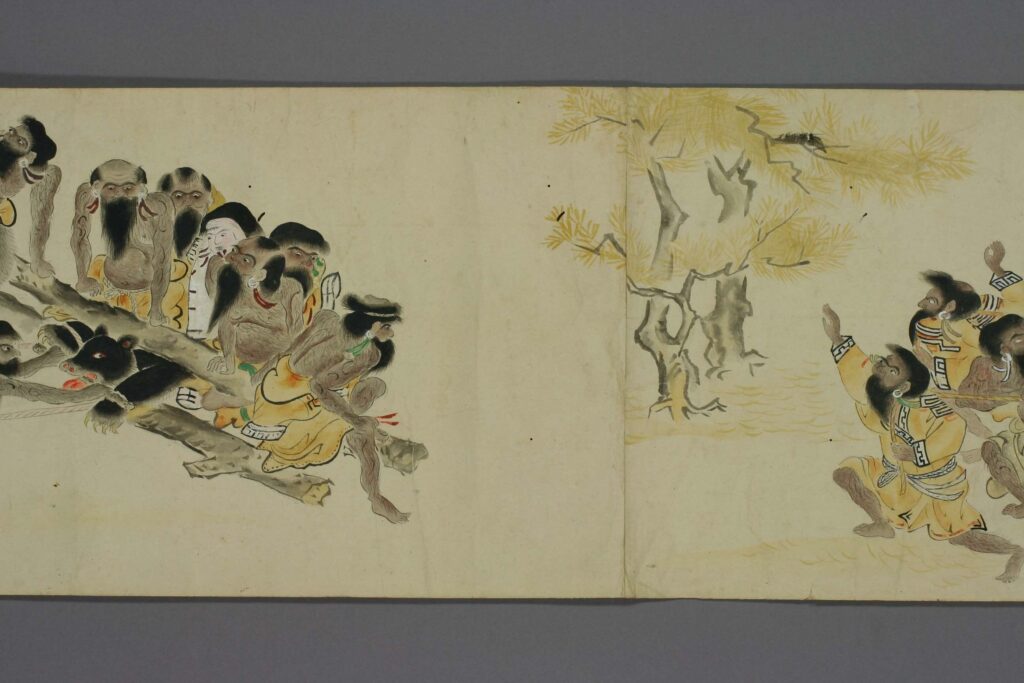
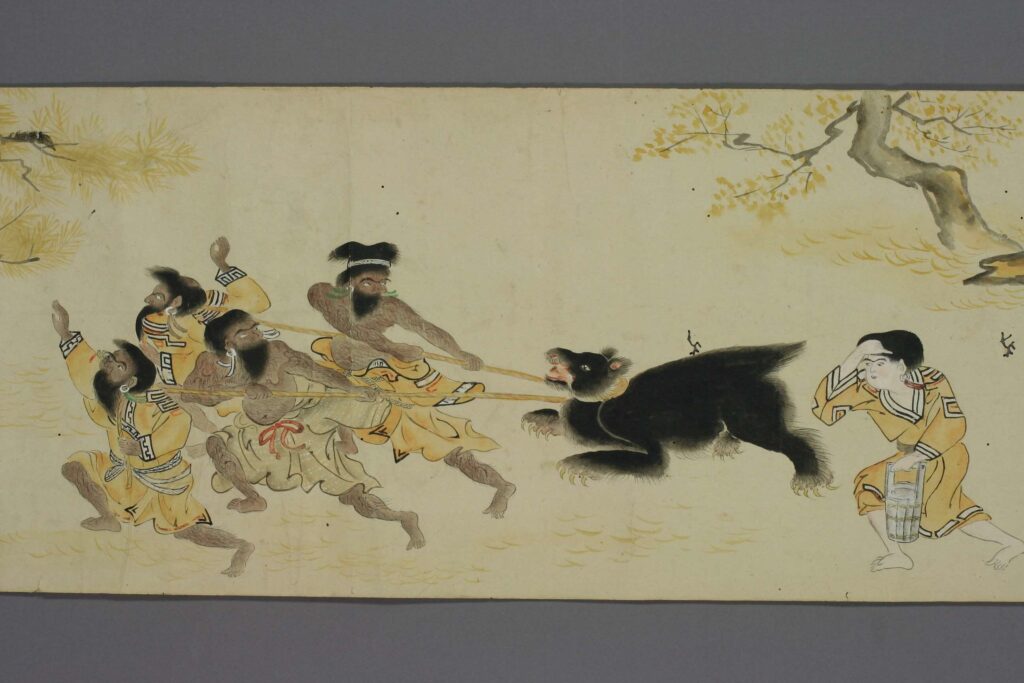
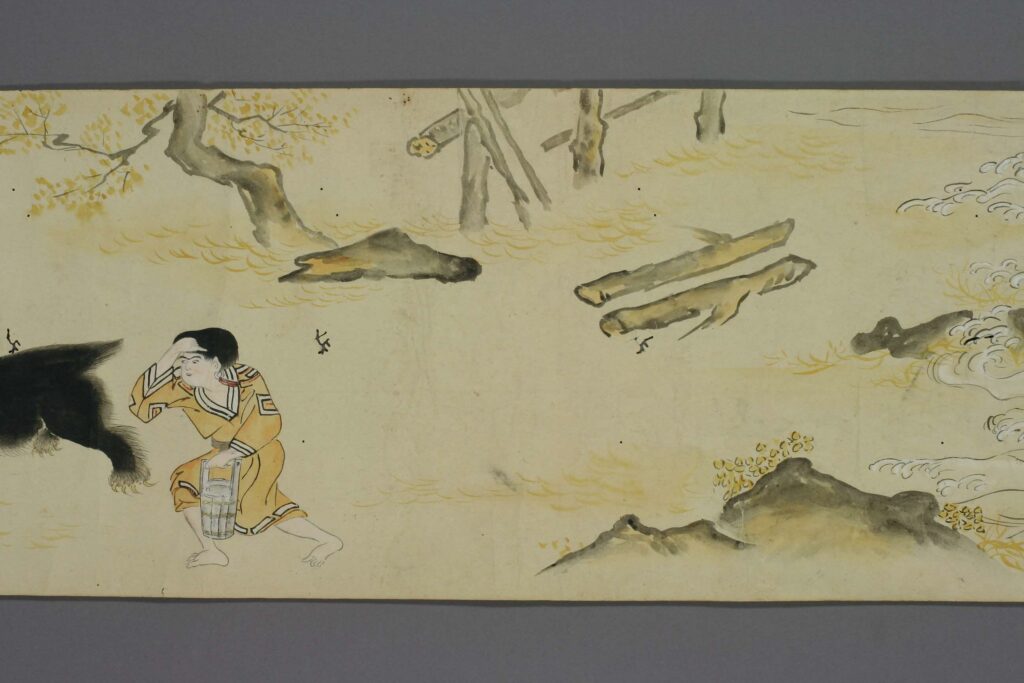



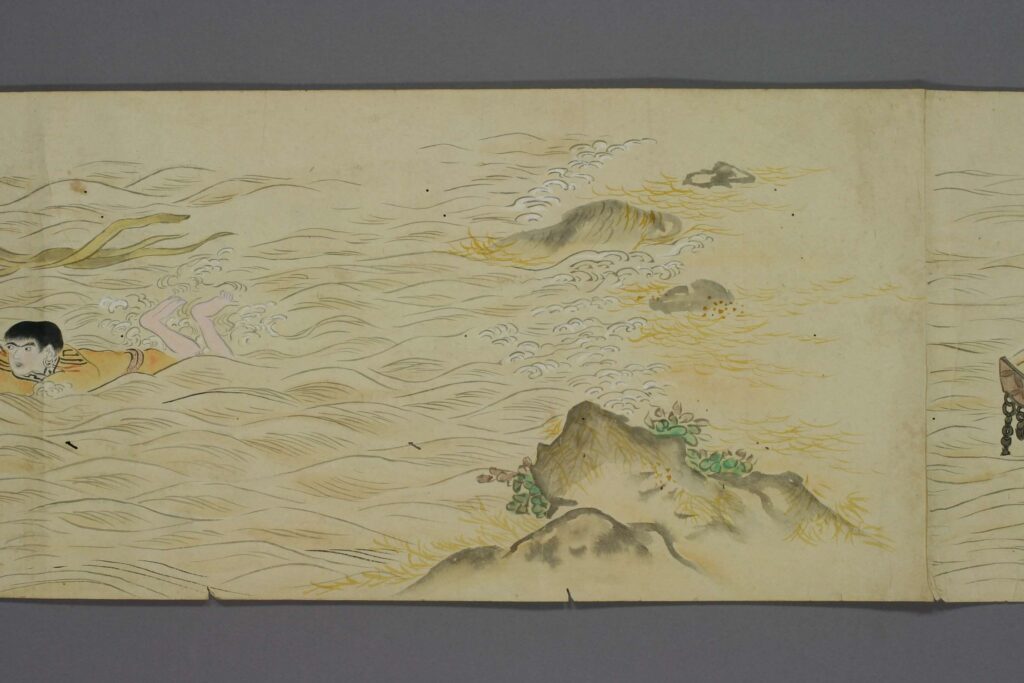
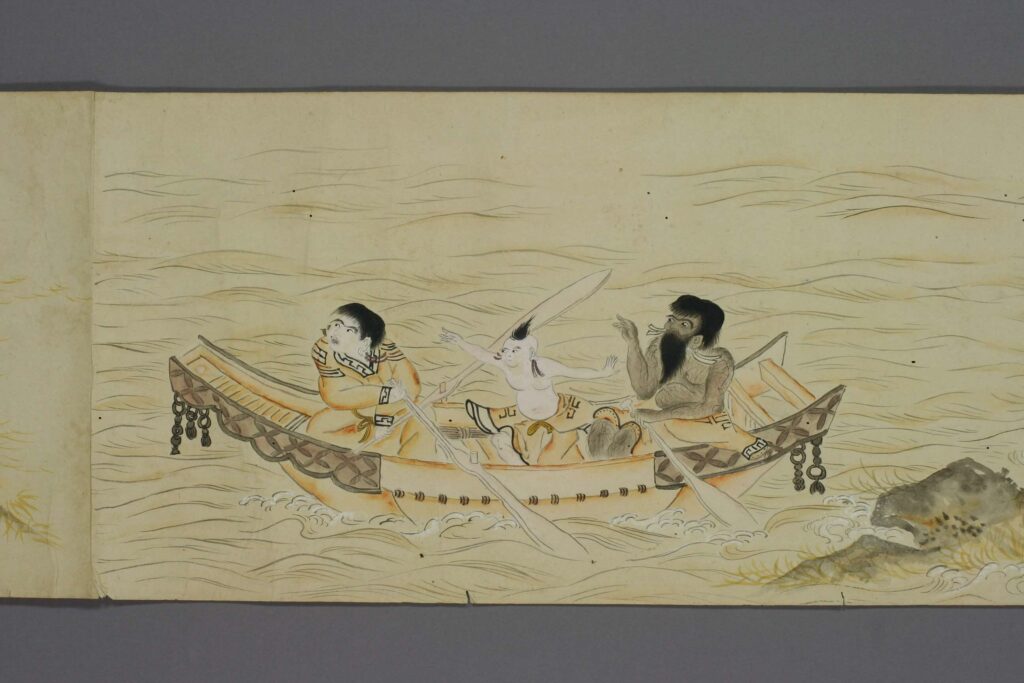

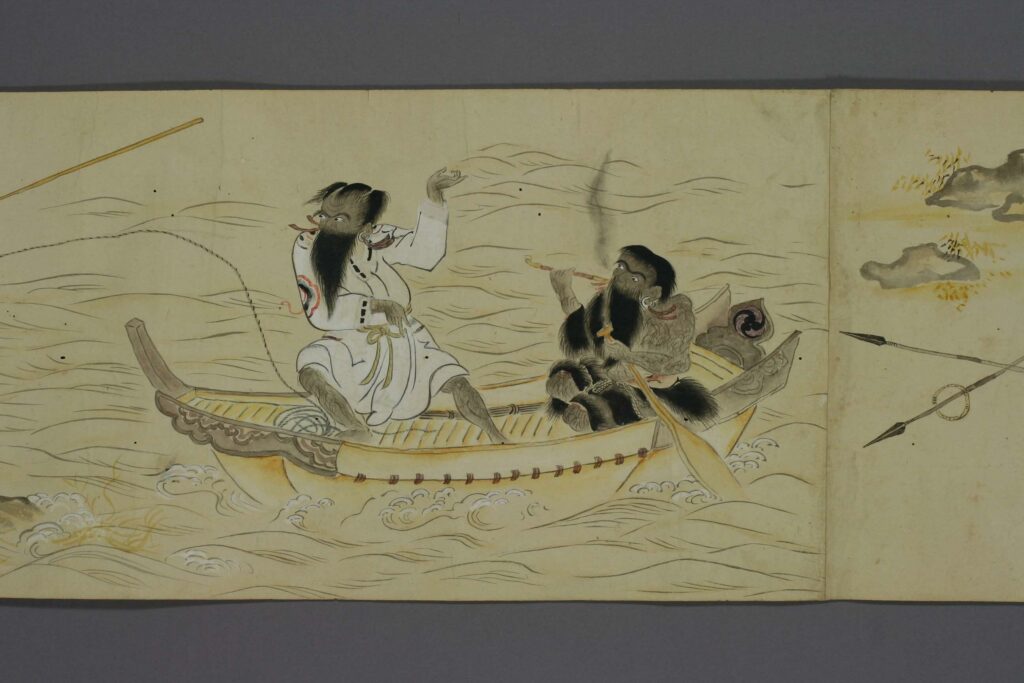




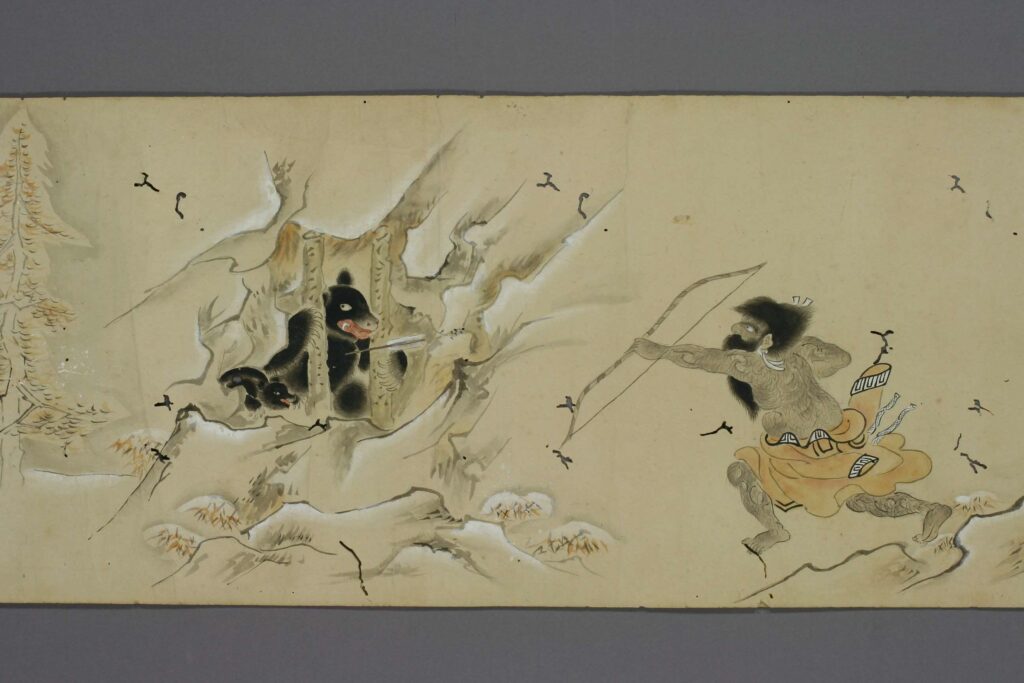
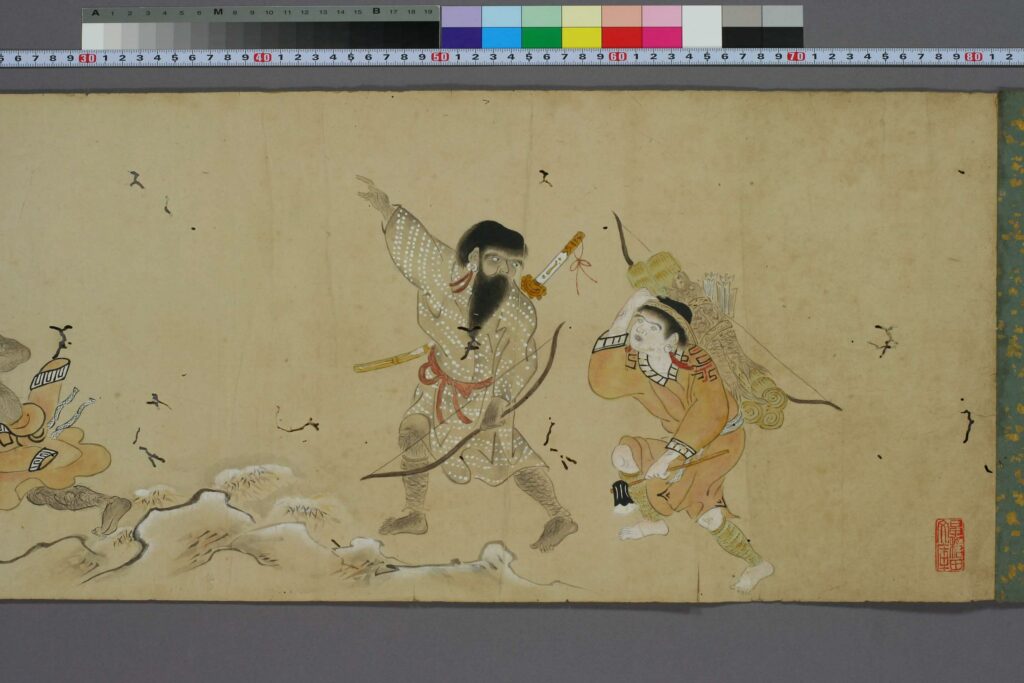
Event事件 History历史 32P 蝦夷土人風俗图巻
历史上的今天 ( 19 ):
- 2024年-02月-06日:GBA:Barbie-The Princess and the Pauper 芭比-公主与乞丐
- 2024年-02月-06日:GBA:Shark Tale 鲨鱼故事
- 2024年-02月-06日:GBA:Fairly Odd Parents,The-Shadow Showdown 反斗家族之暗影决战
- 2024年-02月-06日:GBA:Around the World in 80 Days 80天环游世界
- 2024年-02月-06日:GBA:Action Man-Robot Attack 机动人机器人的攻击
- 2024年-02月-06日:GBA:Backyard Basketball 后院篮球
- 2024年-02月-06日:GBA:Minnano Soft Series-Minnano Shogi 大家的将棋
- 2024年-02月-06日:GBA:Dan Doh-Tobase Shourino SmileShot 高球小子-飞吧胜利的微笑
- 2024年-02月-06日:GBA:Angel Collection2-Pichimoni Narou 天使的收藏品2
- 2024年-02月-06日:GBA:Angel Collection-Mezase Gakuenno Fashion Leader 天使的收藏品
- 2024年-02月-06日:Lilliputian连环画:14猎户擒香樟·后西游记 (66P)
- 2024年-02月-06日:Lilliputian连环画:13麒麟耍文笔·后西游记 (66P)
- 2024年-02月-06日:Lilliputian连环画:12馒头惹风波·后西游记 (66P)
- 2024年-02月-06日:Lilliputian连环画:11甘露灭烈火·后西游记 (66P)
- 2024年-02月-06日:News新闻:2024年2月6日新闻简报(国内国际)
- 2024年-02月-06日:Comic动漫:火影忍者(第5部:卷28~卷34) (1270P)
- 2024年-02月-06日:Comic动漫:火影忍者(第4部:卷22~卷27) (1087P)
- 2024年-02月-06日:Comic动漫:火影忍者(第3部:卷15~卷21) (1278P)
- 2024年-02月-06日:Comic动漫:火影忍者(第2部:卷8~卷14) (1228P)
可点 ➠ 2023年-02月-06日 ➠ 318 s ➠ ♥ 0

